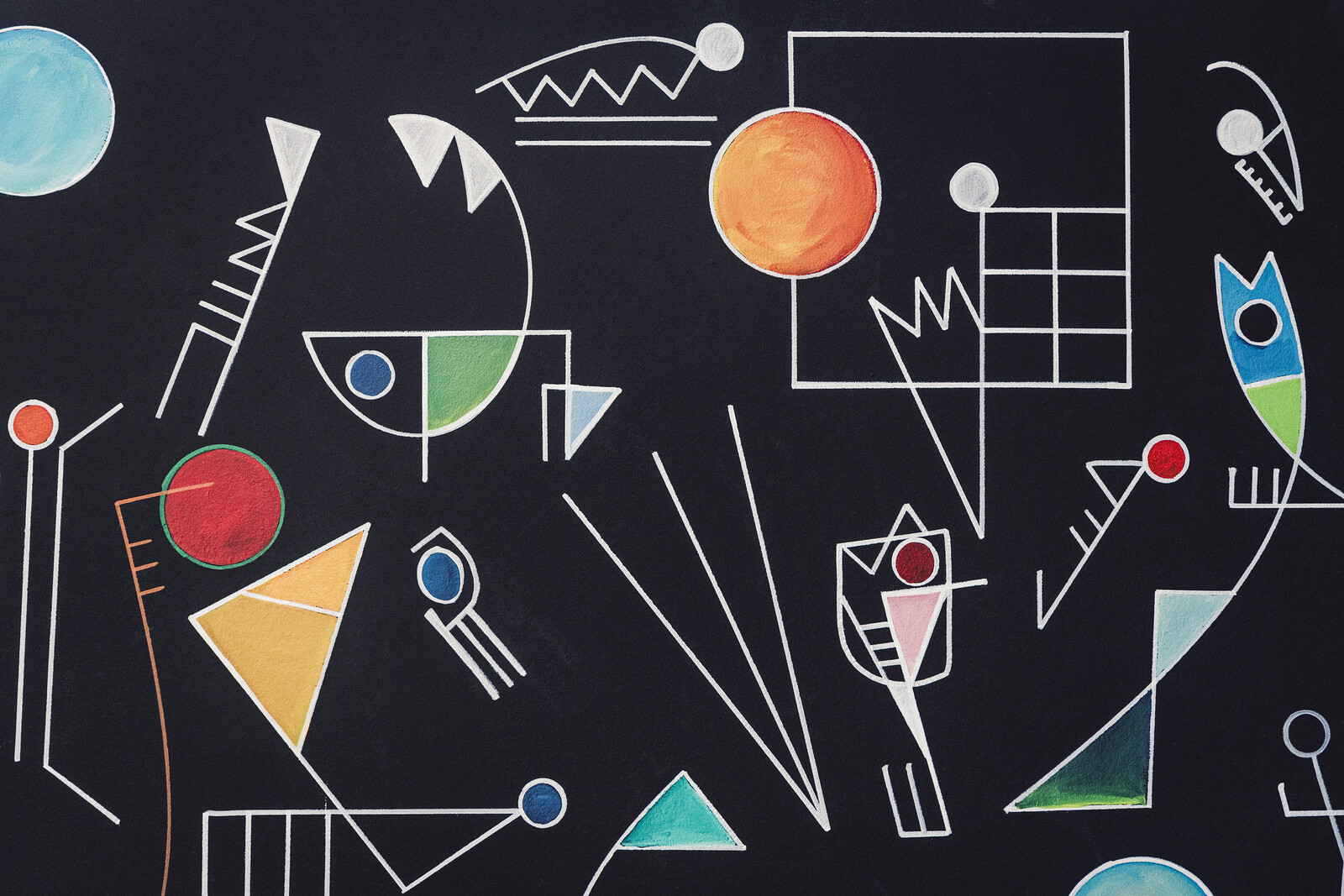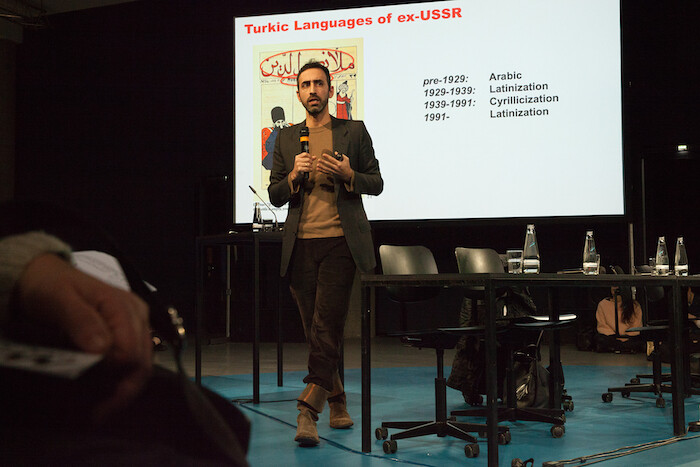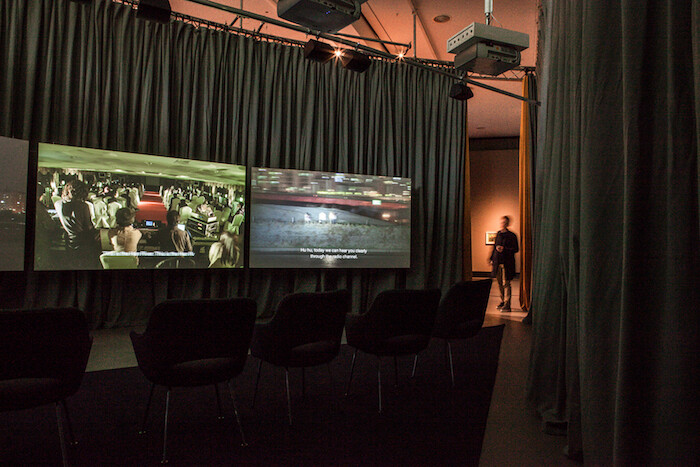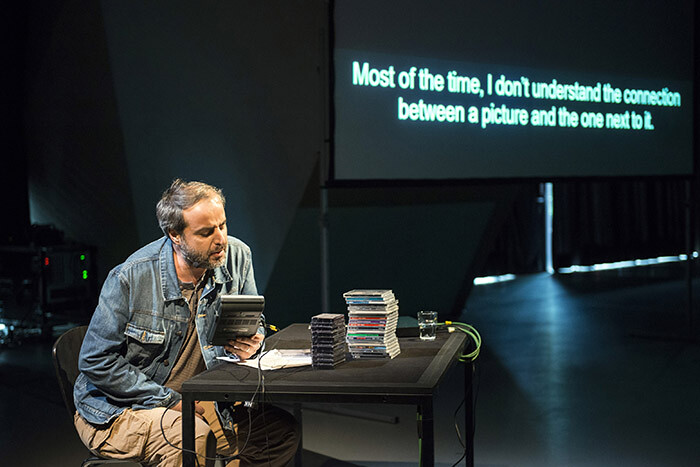Categories
Subjects
Authors
Artists
Venues
Locations
Calendar
Filter
Done
January 25, 2024 – Review
“As Though We Hid the Sun in a Sea of Stories”
Olexii Kuchanskyi

Against a backdrop of constant territorial changes in the former Soviet countries and the ongoing war in Ukraine, “As Though We Hid the Sun in a Sea of Stories” explores the “geopoetics of North Eurasia.” The term denotes heterogeneous, yet tightly interconnected, political and cultural contexts under oppressive regimes, ranging from the Russian Empire to contemporary Russian imperialism via Soviet colonialism. Framed in the handout by HKW’s director, Bonaventure Soh Bejeng Ndikung, as a way of “being and seeing the world through the prism of the Global East,” the show tries to avoid any “totalizing vision” in favor of multiple subjectivities and geographies.
To achieve this, the show’s curators—Cosmin Costinaș, Iaroslav Volovod, Nikolay Karabinovych, Saodat Ismailova, and Kimberly St. Julian-Varnon—have scattered the artworks across the museum in a way that foregrounds their discreteness, each piece separately lit and surrounded by empty space. Stories of colonialism, resistance, and artistic experimentation are encapsulated in these “monads,” yet the aversion to a “totalizing vision” extends to the bewildering absence of wall texts from the galleries (viewers hoping for context must flip through the handbook, which lacks a general plan of the show, to find a work description).
The exhibition’s main space is filled …
July 14, 2023 – Review
“O Quilombismo”
Jesi Khadivi

The reopening of Berlin’s Haus der Kulturen der Welt was marked by three days of performances, concerts, lectures, readings, rituals, and blessings under the banner “Acts of Opening Again: A Choreography of Conviviality.” Those familiar with incoming director Bonaventure Soh Bejeng Ndikung’s program at Savvy Contemporary, which he founded in 2009 and quickly established as a forum for deliberation, experimentation, and sociability, will recognize a continuation of its ethos of conviviality and hospitality as an integral aspect of institution-building. Yet how might such values transition to the larger scale of a bureaucratic German institution, which operates according to different metrics than more fluidly structured art spaces? How does a curatorial stance of cultivating intimate spaces within institutions ultimately expand the channels through which we can engage with art and with each other? How does an invisible curatorial material like intimacy manifest itself within an exhibition? And finally, how might such a politics of conviviality be enacted within what Ndikung has referred to as “the belly of the beast”? These questions pervaded my thinking about “O Quilombismo,” a show whose concept and content are entirely entangled with the act of thinking how to “institute.”
The inaugural exhibition in HKW’s new program …
January 31, 2019 – Review
“The New Alphabet — Opening Days”
Nick Currie

A city with an institution like the Haus der Kulturen der Welt (HKW)—Berlin’s House of World Cultures, a cantilevered cockle shell sitting on the Spree River beside the chancellery buildings that fund it—is a happy city indeed, for it can boast a progressive intellectual hub, a cultural engine spitting with vigor and restless curiosity. HKW is a bulwark against commercial logic, the surging tides of populism, and the threat of Western “endarkenment.” Massive subsidy is required, of course. Offered here by the Kulturstiftung des Bundes, the German state culture fund, that subsidy is neutral enough to allow the institution’s directors to strike the right balance between affirmation and contestation, observation and critique.
Events like “The New Alphabet — Opening Days,” a four-day launch for a program of events that will run for the next two years, exploring cultural, political, and critical approaches to alphabets and code, do not play to empty rooms. Berlin supplies an audience of culturally active people filled with enthusiasm for questions that might strike the citizens of more pragmatic, phlegmatic towns as heavy and pretentious. The blurb for “The New Alphabet” begins with three such questions: “Is it possible to imagine an overabundance of multifarious fields of …
June 29, 2017 – Review
“2 or 3 Tigers”
Ana Teixeira Pinto

Though at present the concept of “media” is almost wholly equated with communication technologies, throughout the modern period this notion extended beyond the technological field, to include aesthetic and spiritual registers. In the late nineteenth century, a medium was someone with the alleged ability to act as a psychic conduit or transmitter, able to capture cosmic vibrations like a human radio frequency receiver. In the broadest sense, the term “media” introduces the concept of a coded mode of materiality—as W. J. T. Mitchell noted, the very notion of mediation “already entails some mixture of sensory, perceptual, and semiotic elements.” Marshall McLuhan’s notion of media, for instance, includes any “material in unfixed form, or even formless material, such as electricity,” and Friedrich Kittler generalized the concept of media to include all “domains of cultural exchange.” The body, or more accurately the nervous system, is the locus of interaction, the site upon which different media intersect. By emphasizing the notion of light as a medium—albeit one without any content—McLuhan underscores its power to shape the forms of human perception and interaction, socially as well as spiritually.
In the exhibition “2 or 3 Tigers,” curated by Anselm Franke and Hyunjin Kim for the Haus …
June 2, 2014 – Review
Berlin Documentary Forum 3
Ana Teixeira Pinto

At times, history is anachronistic. Documentary practices define a film genre that existed before the invention of film. In a sense, the documentary impulse was what made film possible in the first place: workers leaving the factory, the rustling of leaves, a train entering the station, or a street scene can all be described as attempts to mobilize an equality of indifference against the hierarchies of representation. As French philosopher Jacques Rancière put it, only when the anonymous became the subject matter of art could the actualités [actuality films]—the act of recording such subject matter—become an art, instead of say a craft or technique. But though temporarily freed from the obligation to erect monuments to authority, the arts of mechanical reproduction emerged with trappings of their own making.
The non-fictional camera came to represent the conviction that unmediated access to reality was not only possible, but imperative—a conviction which peaked with Direct Cinema’s usage of hand-held cameras and synchronized sound (before the 1960s documentary sound was synced in post-production and relied heavily on Foley artists). Direct Cinema however—and one could add, most of the genre—tacitly ignores the conventions of realism, namely the technical synthesis that upholds its claims to observational truth. …